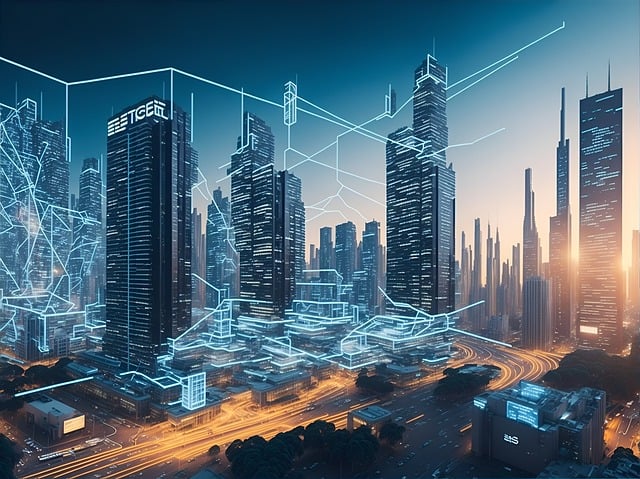AI image analysis is transforming commercial landscaping by improving lot cleanliness and maintenance. Advanced computer vision technology enables AI systems to identify and classify landscape elements, promote plant health, and minimize chemical usage. By analyzing drone or camera images, AI algorithms detect anomalies like weeds, diseases, and pest infestations early, empowering professionals with data-driven decisions. AI-powered pest control optimizes inspection and pesticide application, enhancing efficiency, effectiveness, and sustainability. Integrating AI in landscaping involves assessing needs, choosing suitable tools, training models, integrating workflows, and monitoring performance to drive lot cleanliness and maintenance tasks.
“Revolutionize your commercial landscaping with AI image analysis—a game-changer in pest control. This advanced technology offers a more efficient, cost-effective solution for maintaining lot cleanliness. By leveraging AI, landscapers can identify and eliminate pests swiftly, enhancing overall aesthetics.
In this article, we’ll explore how AI transforms pest management, providing step-by-step guidance to implement its power. Discover the benefits of improved visibility through AI image analysis and learn to harness it for superior lot maintenance.”
- Understanding AI Image Analysis for Commercial Landscaping
- The Benefits of AI-Powered Pest Control in Maintaining Lot Cleanliness
- Implementing AI: A Step-by-Step Guide for Efficient Landscaper Businesses
Understanding AI Image Analysis for Commercial Landscaping

AI image analysis is transforming commercial landscaping by revolutionizing lot cleanliness and maintenance practices. Through advanced computer vision, AI systems can identify and classify various elements within a landscape, from weeds and pests to plant species and soil conditions. This capability enables efficient and targeted treatments, ensuring optimal plant health and reducing the use of unnecessary chemicals.
By analyzing high-resolution images captured by drones or cameras, AI algorithms detect anomalies and provide insights into the overall landscape health. For instance, it can pinpoint areas requiring weeding, identify diseased plants, or assess soil moisture levels. This proactive approach allows landscaping professionals to make data-driven decisions, enhancing the aesthetics and sustainability of commercial properties.
The Benefits of AI-Powered Pest Control in Maintaining Lot Cleanliness

AI-powered pest control is transforming the way we maintain lot cleanliness, offering numerous benefits that enhance both efficiency and effectiveness. By leveraging AI image analysis, professionals can now inspect large areas with unprecedented accuracy and speed. This technology allows for the early detection of pest infestations by identifying visual cues that might be missed by human observers. For instance, AI algorithms can recognize patterns and signs of pest activity, such as nest building or damage to vegetation, enabling prompt intervention before issues escalate.
Moreover, AI-driven systems can optimize pesticide application by pinpointing exact locations where treatment is needed. This not only reduces the environmental impact of chemical use but also minimizes waste, making it a more sustainable approach. The ability to analyze vast amounts of visual data in real-time empowers landscaping teams to maintain pristine lot conditions, ensuring safety and aesthetics for all users.
Implementing AI: A Step-by-Step Guide for Efficient Landscaper Businesses

Implementing AI in your landscaping business can significantly enhance efficiency and effectiveness, especially when it comes to pest control and lot maintenance. Here’s a step-by-step guide for integrating this cutting-edge technology:
1. Assess Your Needs: Start by evaluating specific areas where AI could bring the most value. This might include tasks like identifying pests through AI image analysis for lot cleanliness, monitoring vegetation health, or optimizing maintenance schedules. Understanding your unique challenges will help tailor your AI implementation.
2. Choose the Right AI Tools: Select AI platforms and applications designed for commercial landscaping. These tools often incorporate features such as object detection, plant species recognition, and predictive analytics to aid in pest control and maintenance. Ensure the solutions align with your business goals and integrate seamlessly with your existing systems.
3. Train and Test Your AI Model: Collect high-quality images of common pests, plants, and landscape issues relevant to your region. Train your AI model using these data sets to recognize patterns accurately. Once trained, test the model on a diverse range of images to validate its performance before deploying it in real-world scenarios.
4. Integrate AI into Your Workflow: Incorporate AI into your daily operations by developing user-friendly interfaces or workflows that allow your team to interact with the AI system efficiently. This could involve creating apps for pest identification, automated maintenance scheduling, or real-time data collection and analysis.
5. Monitor and Optimize Performance: Continuously evaluate the AI system’s performance through regular audits and user feedback. Adjust parameters, retrain models as needed, and refine workflows to maximize accuracy and efficiency in lot cleanliness and maintenance tasks driven by AI image analysis.
AI image analysis offers a revolutionary approach to commercial landscaping, transforming how businesses maintain lot cleanliness. By leveraging AI-powered pest control, landscapes can be monitored and treated more efficiently, ensuring a pristine and healthy environment. Implementing this technology follows a straightforward process, enabling landscapers to elevate their services and stay ahead in the market. Embracing AI image analysis for lot cleanliness and maintenance is not just a trend but a strategic move towards a smarter, more sustainable future in commercial landscaping.
